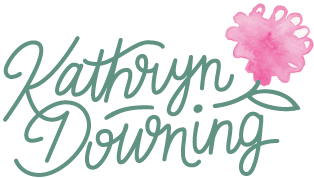Design Operations
When I joined the Hy-Vee a designer on the Aisles Online team, I saw many opportunities for improvement on the UX team. Morale was low and designers didn’t feel supported. There were many opinions on topics, but no one was facilitating the team towards shared agreements and decisions. When the UX Manager position was created, I applied and was promoted despite only having been on the team a few months.
It’s been a busy two years:
-
Communication
Established a regular cadence of 1:1 meetings with all direct reports. Adjusted rituals and meetings based on team feedback. Conducted internal training on productive critique practices, and set a rotational schedule to ensure everyone was regularly sharing work.
-
Process
Clarified and documented design process. Early on, the need was really to clarify when approvals were required through the process. Now, process challenges are making time for discovery and testing prototypes with users before development begins.
-
Resourcing
Realigned resources on the team to match strengths and professional interests to areas of needs. Moved to a hybrid model rather than fully embedded, to encourage collaboration and pairing within UX. Work with AVP on headcount planning as the team continues to grow.
-
Training
Obtained leadership training for team members who are interested in future management. Brought in Nielsen Norman Group for cross-functional training on Omnichannel Customer Experiences and Mobile Design. Entire team complete basic web accessibility training. Currently working on a plan for reimbursement for IAAP certifications.
-
Development
Defined job levels and provided a framework for progression. Delegated responsibilities to a team member to demonstrate he was ready for a promotion to manager. He did well and was recently promoted. I have also recommended and gotten promotions for three individual contributors who have grown their UX skillset and taken on new challenges.
-
Hiring
Introduced structured interviewing, defined a scoring rubric, and created a shared bank of interview questions to reduce bias in the hiring process.
-
Onboarding
Improved the team onboarding process by dedicating time over the first week to get new hires through the basics of the team, answer questions they have and ease them in to things before pairing them with a veteran team member who introduces them to the product team practices and projects.
-
Tools
Initiated an effort to evaluate and compare design tools. Formed a Figma working group to build out component libraries and facilitate internal trainings to increase familiarity with features.
Evaluated remote user testing solutions. Purchased UserZoom, implemented and provided training to the team. Designers are now able to easily conduct remote unmoderated and moderated studies. -
Design System
Conducted a listening tour of people in different roles to understand pain points for a design system effort that had stalled out. Invested time in focused learning about design systems, and then drafted a future vision and business case for dedicated resources. Hired approved roles and have been overseeing our new design system effort.
-
Quality
We have been evolving our standards for quality. There has been a large organizational push for brand and design consistency. Within our team we have defined quality as a combination of utility, usability and accessibility.
